For me, personally, the saddest thing about growing up was not leaving mr childhood innocence behind, nor having to take on the responsibilities of adulthood, but no longer having a valid reason to create things with Play-Doh. And, shamefully, the first thought that went through my mind when I found out I was going to have a child of my own was that I would legitimately be able to buy and play with it all over again.
Because who doesn’t love Play-Doh? The smell, the texture, the colours…they all add up to an amazingly tactile experience. There is an alternative, of course, in Plasticine; a great medium for serious modelling, but never as satisfying to just, well – squish.
There are two types of Play-Doh people – those who revel in the smooshing together of different doughs to make swirly, rainbow lumps and those who have to sit on their hands to stop themselves intervening when their darling offspring starts merging blobs of pristine yellow into as yet untouched perfect purple. I know which I am (rubs fingers to get circulation back).
The creation of Play-Doh as a child’s sculpting material was wholly accidental. The malleable dough was first invented back in the 1930s by Noah McVicker, who worked for a soap manufacturer in the U.S. city of Cincinnati, Ohio. It was originally sold as cleaning putty which could remove coal residue from wallpaper but as coal-based heating started to be replaced by natural gas (and thus there weren’t so many soot marks to remove) the company’s profits started to suffer. In the mid-fifties McVicker’s nephew, Joe, was brought in to try to turn fortunes around. A bit of research found that children were using it in their classrooms to make models with and he quickly realised the potential of the putty as a fun plaything.
Joe took it back to the drawing board and remarketed it, before presenting it at a school suppliers’ convention. It was here that it caught the eye of a department store, which then began selling it. In 1956 he and Noah started up the Rainbow Crafts Company which made and sold it under the Play-Doh brand name that is instantly recognisable today. Other stores began stocking it; most noticeably Macy’s of New York.
In 1957 adverts were strategically placed in significant kids’ TV programmes, bringing the product to the eyes of the nation’s toy consumers; the next year Play-Doh sold nearly three million dollars’ worth.
Both Britain and France had to wait another few years before the fun stuff came to their shores, but in 1964 it arrived and has become a staple of the toy cupboard here ever since. Later on, in the 1980s, the cardboard and metal bottomed can that the putty was packaged in was changed for a less rust-prone, airtight plastic container.
The ownership of the brand changed several times over the years; in 1965 the Fortune 500 company General Mills, Inc. bought Rainbow Crafts and merged it into its Kenner Products division. Later, the Tonka Corporation (famous for its toy trucks) took over the united pair. In the early nineties Play-Doh became the property of Hasbro, where it has stayed ever since.
So why is Play-Doh so popular? It’s addictive: it can be rolled, flattened, squeezed, prodded, shaped and squashed over and over again! It isn’t toxic, it doesn’t stain and as long as it’s kept in its pot with the lid on firmly then it lasts for absolutely ages. Its big range of colours means that there’s no end to the different things you can make out if it. You won’t find a pre-school or nursery that doesn’t use it (or at least hasn’t made their own version of it with flour, water, cream of tartar and oil – fine as a temporary substitute but you won’t be able to replicate that comforting smell…) as a fantastic tool for encouraging creativity and imagination.
And of course – it’s not just the dough itself that is endlessly entertaining….Play-Doh comes with an accompaniment of toys to use with it. The first was the Fun Factory in 1960; a plastic tool with a large handle. You load Play-Doh into the hole within the Fun Factory and press down on the handle; the Play-Doh is then pushed through one of various shapes that can be fitted on the front. No child ever tires of seeing a long spikey snake or several strands of green spaghetti emerging from the Fun Factory – and if you can bear to see the colours mixed up (shudder) then you can experiment with some pretty groovy swirly patterns.
After the Fun Factory came a whole heap of other things, and now you can choose from (amongst others) The Diggin’ Rigs playset (consisting of construction vehicles), a fire truck, a rubbish truck, the Doh Vinci (geddit?) art set, lots of character tie-ins and the ‘Launch Game’ which allows Play-Doh to be even more fun by actually inviting you to lob it around.
You can also get the ‘Sweet Shoppe’, the ‘Candy Jar’, the ‘Ice Cream Sundae Cart’, the ‘Frosting Fun Bakery’, the ‘Meal Makin’ Kitchen’, the ‘Swirling Shake Shoppe’ etc. Do you see a pattern of these toys encouraging toddlers to make lots of brightly coloured, yummy faux food that they are not allowed to eat? (The Hasbro Play-Doh website has the following disclaimer: ‘PLAY-DOH compound is not a food item and is not intended to be eaten…Also, due to the high salt content in PLAY-DOH compound, the product can be harmful to pets if ingested.’ So don’t make pretend dog food then.)
The website also contains a page of Play-Doh ‘Fun Facts’: apparently, more than two BILLION cans of the stuff have been sold since 1956, with seven million Fun Factory sets flying off the shelves since 1999. That’s a lot of children (and grown-ups) squashing and squishing, rolling out, making shapes, building models and generally having fun with one of the simplest, but most effective children’s toys ever created.
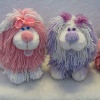

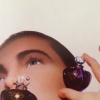
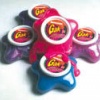
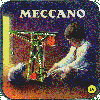
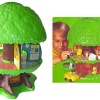
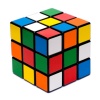
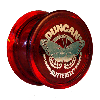
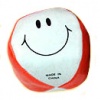
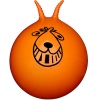
Do You Remember Play-Doh?
Do You Remember Play-Doh?